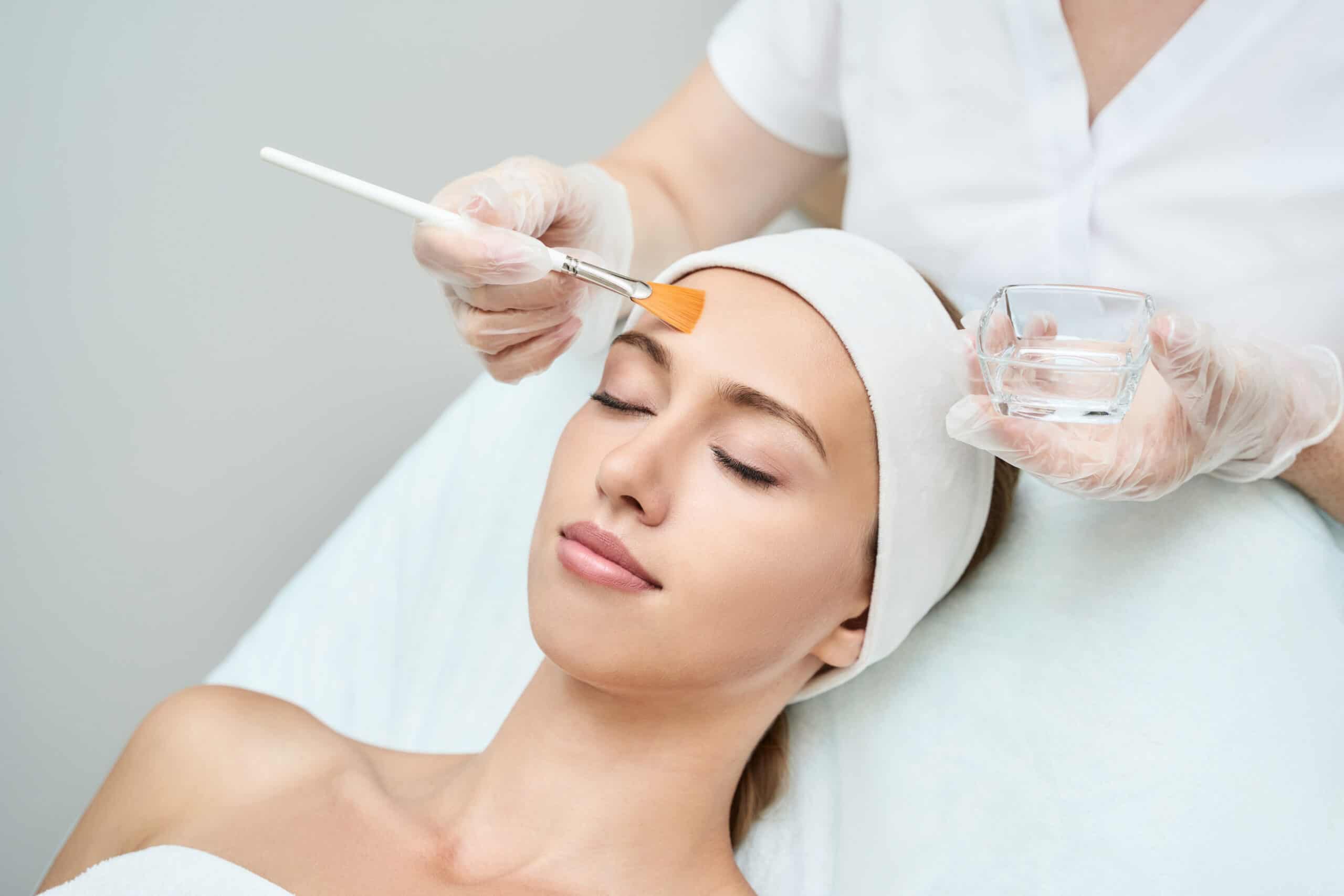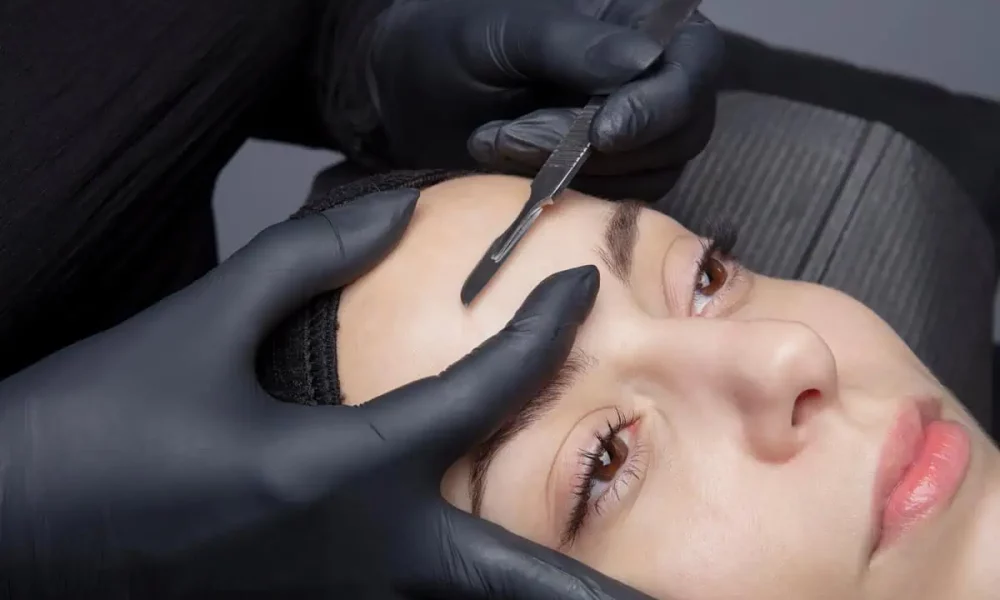Table of Contents
Caring for your skin is essential for maintaining a healthy, youthful appearance. With various facial treatments available today, knowing which option is best for your skin concerns can be difficult. Among the many treatments available, Chemical Peels Facial remains a popular and practical choice for addressing many skin issues. But how do chemical peels compare to other facial treatments? This blog will explore the differences, benefits, and considerations of chemical peels versus other popular skin treatments, helping you determine the best option for your skincare needs.
What is a Chemical Peel Facial?
A Chemical Peels Facial involves applying a chemical solution to the skin, which causes the outer layer of the skin to exfoliate and eventually peel off. This controlled shedding reveals a fresh layer of skin underneath, often smoother, less wrinkled, and more even in tone. Depending on the desired results and the treated skin condition, chemical peels come in varying strengths (superficial, medium, and deep).
The benefits of chemical peels are numerous, ranging from treating acne scars to reducing hyperpigmentation and smoothing out fine lines and wrinkles. But how do they compare to other popular facial treatments, such as microdermabrasion, microneedling, or laser resurfacing? Let’s take a closer look at how these treatments stack up.
Chemical Peels vs. Microdermabrasion
Microdermabrasion is a non-invasive procedure that uses a machine to gently sand your skin, removing the thicker, uneven outer layer. It is primarily used to improve the appearance of sun damage, wrinkles, fine lines, and age spots. While Chemical Peels Facial and Microdermabrasion aim to exfoliate and rejuvenate the skin, some key differences exist.
- Depth of Treatment: Depending on the type used, chemical peels can penetrate deeper layers of the skin. In contrast, microdermabrasion is a surface-level treatment that mainly affects the outermost layer (epidermis).
- Customization: Chemical peels can be tailored to address specific skin concerns based on the ingredients and strength of the peel. Microdermabrasion, while effective for mild skin concerns, doesn’t offer the same level of customization.
- Recovery Time: Chemical peels may require downtime depending on the depth of the peel, while microdermabrasion has little to no recovery period. This makes microdermabrasion a more convenient option for those seeking a quick treatment with minimal downtime.
Overall, a Chemical Peels Facial may be the better choice if you’re looking for a more intensive treatment that can address deeper skin concerns. However, microdermabrasion might suit those seeking a gentle exfoliation with minimal recovery time.
Chemical Peels vs. Microneedling
Microneedling is another popular treatment for improving skin texture and appearance. It involves using a device with tiny needles to create controlled micro-injuries in the skin, which stimulates collagen production and promotes healing. Both chemical peels and microneedling target skin rejuvenation, but they work differently.
- Method of Action: A Chemical Peel Facial exfoliates the skin by removing the outer layer, while microneedling creates micro-injuries that trigger the body’s natural healing process, promoting collagen production.
- Skin Concerns Treated: Microneedling is highly effective for improving skin texture, reducing the appearance of scars, and stimulating collagen. Chemical peels, on the other hand, are better suited for treating pigmentation issues, sun damage, and superficial lines.
- Downtime: Microneedling typically involves some redness and swelling after the procedure, but recovery is usually quick. Deeper chemical peels, in contrast, may require more significant downtime as the skin heals and peels.
For those focused on collagen stimulation and reducing scars, microneedling might be more appropriate. However, a Chemical Peels Facial could offer better results if you’re targeting pigmentation or surface-level skin concerns.
Chemical Peels vs. Laser Resurfacing
Laser resurfacing uses focused light beams to remove damaged skin layer by layer. This treatment often addresses deeper skin concerns, such as acne scars, wrinkles, and severe sun damage. How does laser resurfacing compare to chemical peels?
- Precision: Laser resurfacing allows for precise targeting of specific areas of the skin, while chemical peels treat the entire face more uniformly.
- Skin Types: Chemical peels can be tailored for different skin types, but not all lasers are safe for all skin tones. Those with darker skin tones may be more prone to hyperpigmentation with laser treatments, making chemical peels a safer option.
- Downtime: Both treatments can require some downtime, particularly deep chemical peels and laser resurfacing. However, laser treatments generally involve a longer recovery time, primarily if they treat more profound layers of skin.
Chemical Peels vs. Hydrafacial
A Hydrafacial is a non-invasive treatment that cleanses, exfoliates, and hydrates the skin using a specialized device. It’s often marketed as a quick, painless facial with immediate results and no downtime. How does it compare to a Chemical Peel Facial?
- Method of Action: Hydrafacials use a patented machine to clean and hydrate the skin, while chemical peels exfoliate by chemically removing dead skin cells.
- Intensity: Hydrafacials are generally milder than chemical peels and suitable for regular use. Chemical peels, on the other hand, offer deeper exfoliation and more significant results, especially for treating acne, wrinkles, and pigmentation.
- Downtime: Hydrafacials have no downtime, making them an excellent option for those looking for a “lunchtime facial.” Chemical peels, especially deeper ones, require some downtime for the skin to peel and heal.
Hydrafacials are ideal for maintenance and hydration, but a Chemical Peels Facial can address broader skin concerns for those seeking more transformative results.
Which Treatment is Best for You?
Choosing between a Chemical Peels Facial and other facial treatments depends on your skin concerns and goals. Here are a few things to consider when making your decision:
- Skin Type: Those with sensitive skin may prefer gentler treatments like a Hydrafacial or superficial peel, while those with more resilient skin can handle medium or deep peels.
- Targeted Concerns: If you’re dealing with hyperpigmentation, sun damage, or fine lines, a chemical peel may be the best option. Microneedling or laser resurfacing may offer better results for acne scars and improve skin texture.
- Downtime: Consider how much time you can dedicate to recovery. Treatments like microdermabrasion or a Hydrafacial have little to no downtime, while chemical peels and laser resurfacing may require several days to a week of recovery.
- Long-Term Goals: If you’re looking for immediate results with little to no downtime, a Hydrafacial or microdermabrasion may be more appealing. However, if you’re aiming for long-term skin tone, texture, and appearance improvements, a Chemical Peels Facial or laser resurfacing may be worth the investment.
Conclusion
Whether you’re looking to reduce acne scars, hyperpigmentation, or fine lines, chemical peels could be your solution. If you’re ready to explore the benefits of a Chemical Peels Facial Glow Beauty Bar in Smyrna, GA, we are here to help.
Book Your Chemical Peel Facial Today in Smyrna, GA, and take the first step towards healthier, more radiant skin! Contact Glow Beauty Bar to schedule a consultation and learn more about the best treatment for you.





